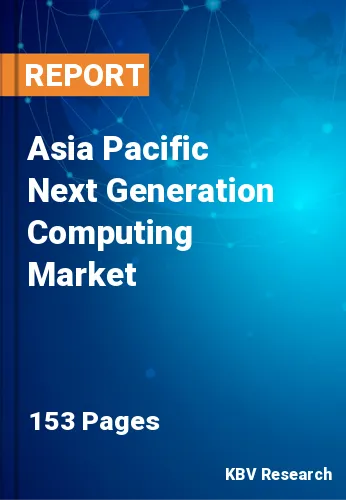The Asia Pacific Next Generation Computing Market would witness market growth of 18.7% CAGR during the forecast period (2022-2028).
Next-generation computing demand grew significantly, particularly in bioscience, since it was employed to produce a vaccine and combat the pandemic effects. Since the outbreak of COVID-19, data utilization and cloud demand has risen, mainly to businesses turning toward remote working and migrating workloads to the cloud.
Next-generation computing is the process of executing complex application programmes efficiently, consistently, and swiftly using parallel processing. Systems are being used to run new workloads such as machine learning, genomic sequencing, deep learning, pattern recognition and speech and facial recognition. It makes a significant contribution to human well-being, productivity and productivity, scientific progress, and national security.
India and China control the cloud Next-Generation Computing industry in Asia-Pacific, and these two nations are among the world's growing economies. In addition, China claims to have one of the best-developed systems, having increased spending faster than the other countries. This government plan aims to position China as an industry leader in artificial intelligence in areas such as driverless technology, customer artificial intelligence technologies, telemedicine, and bio pharmacy, and it is expected to open up a huge market for cloud Next-Generation Computing
The aforementioned factors all contribute to the regional high-performance computing market's overall growth. Furthermore, the cloud democratizes Next-Generation Computing access by eliminating substantial capital outlays, cost of maintenance, and energy and space demands, as well as decreasing deployment time to just 20 minutes. Capital, time, and labor can be better spent on purchasing computational power and other assets that would help the research move forward.
The China market dominated the Asia Pacific Next Generation Computing Market by Country in 2021, and would continue to be a dominant market till 2028; thereby, achieving a market value of $34.9 billion by 2028. The Japan market is anticipated to grow at a CAGR of 17.9% during (2022 - 2028). Additionally, The India market would showcase a CAGR of 19.4% during (2022 - 2028).
Based on Type, the market is segmented into High Performance Computing, Quantum Computing, Energy Efficiency Computing, Memory Based Computing, Approximate & Probabilistic Computing, Brain Type Computing, Optical Computing, Thermodynamic Computing, and Others. Based on Component, the market is segmented into Hardware, Software, and Services. Based on Offering, the market is segmented into On-premise and Cloud. Based on Organization size, the market is segmented into Large Enterprises and Small & Medium Enterprises. Based on End User, the market is segmented into Government, BFSI & Telecom, Space & Defense, Energy & Power, Chemicals, Healthcare, Academia, and Others. Based on countries, the market is segmented into China, Japan, India, South Korea, Singapore, Malaysia, and Rest of Asia Pacific.
Free Valuable Insights: The Worldwide Next Generation Computing Market is Projected to reach USD 465.7 Billion by 2028, at a CAGR of 18%
The market research report covers the analysis of key stake holders of the market. Key companies profiled in the report include IBM Corporation, Atos Group, Cisco Systems, Inc., Hewlett-Packard Enterprise Company, Amazon Web Services, Inc., Microsoft Corporation, Intel Corporation, Oracle Corporation, Google LLC, and Alibaba Group Holding Limited.
By Type
By Component
By Offering
By Organization size
By End User
By Country
Our team of dedicated experts can provide you with attractive expansion opportunities for your business.

